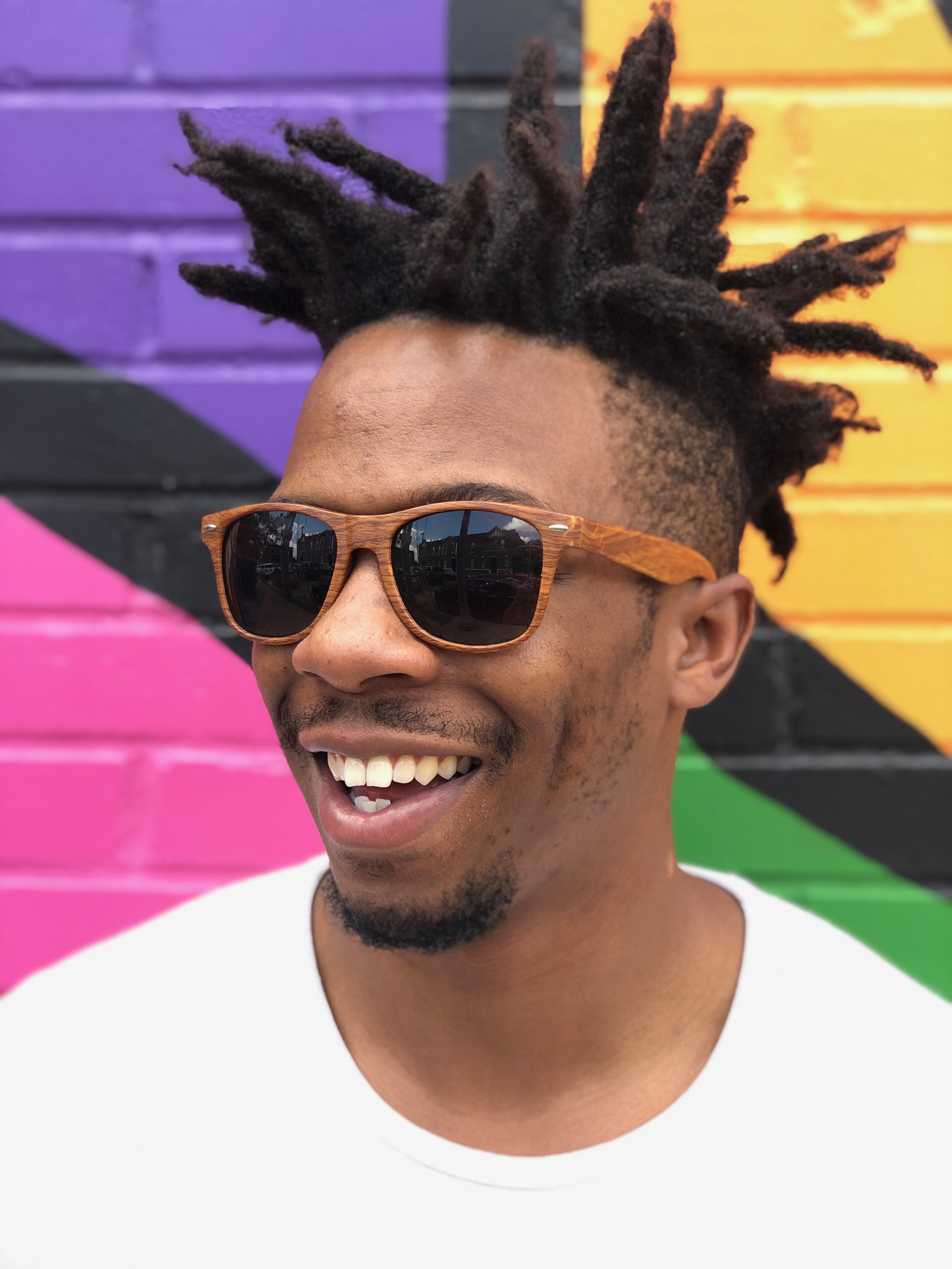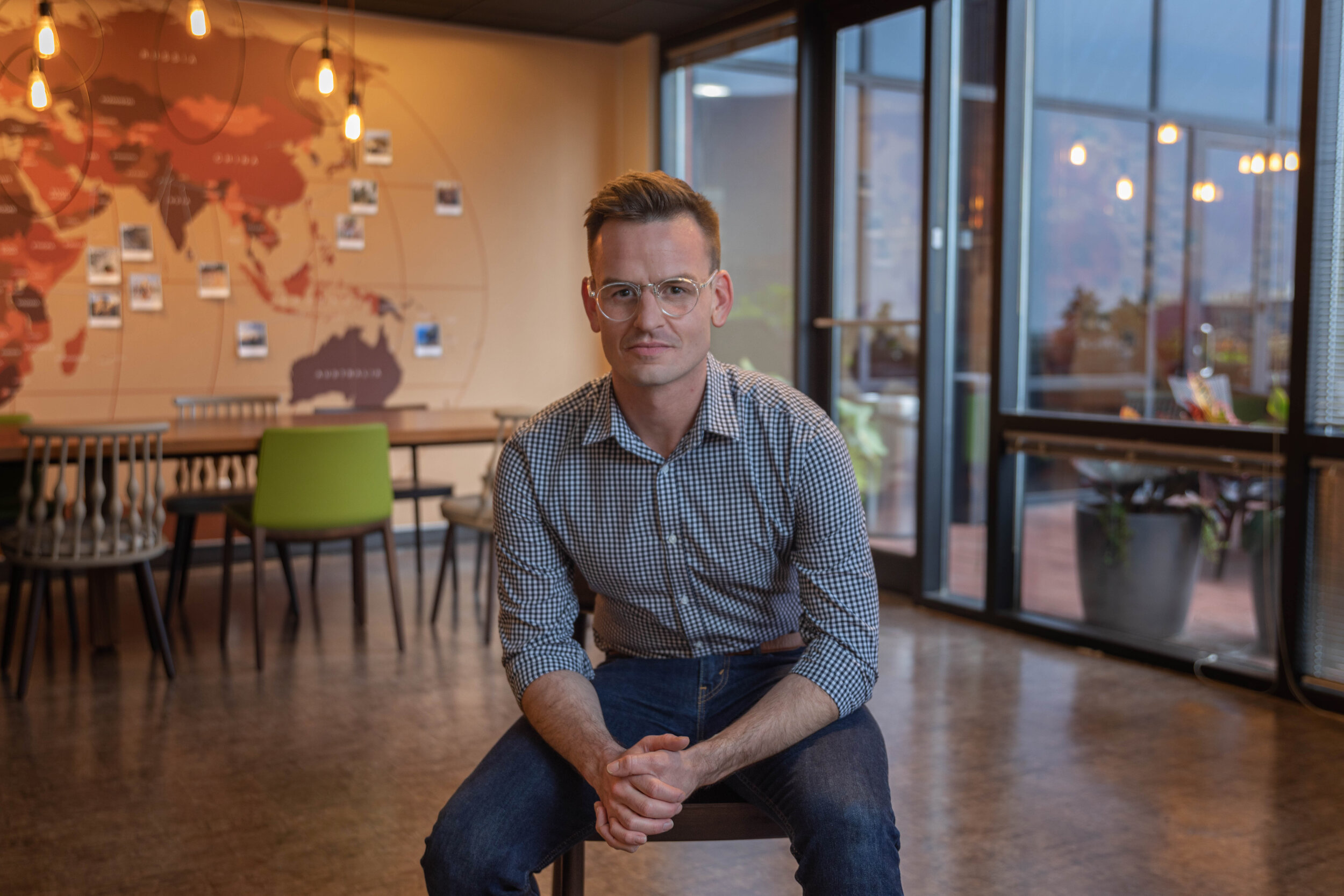Black Artistry Shines Brightly in Forest Park
From a global pandemic to protests against racism and police brutality, 2020 has been a tumultuous year. As the nation tries to find some semblance of balance, young Black artists in St. Louis are coming together to discover beauty and hope underneath the turmoil.
Introducing PaintedBlack STL
About three months ago, Jayvn Solomon and Tyson Baker founded PaintedBlack STL, a collective of local Black artists brought together to paint boarded-up businesses in St. Louis during the height of the city’s protests.
“Shortly after the civil unrest sparked from the killing of George Floyd, Tyson witnessed several businesses in Downtown St. Louis being damaged,” says Solomon. “He shot me a text the next morning wanting to solicit the services of local artists to paint on boarded up businesses in solidarity with the Black Lives Matter movement.”
From there, the duo decided to gather donations as compensation for local Black artists and to pay for their materials. For them, the short-term goal was to boost and raise awareness of local Black artists. Now, the mission is to broaden the focus by fostering and cultivating creative opportunities and engagement events with local Black artists.
Continued Growth
As the organization grew and gained more traction locally, Solomon and Baker found themselves being inundated with requests, from both businesses and media. That’s when they reached out to Charlie Tatum for help. Tatum, who operates a creative studio Downtown and has her own passion for art, was eager to offer her management expertise.
“They were getting so much attention so fast, they needed assistance filtering all these different media outlets and different businesses who wanted to coordinate and collaborate to hire artists to build and create,” says Tatum. “They needed someone to help facilitate and manage all of these requests and that’s where I came in.”
Tatum and Solomon have known each other for years and have felt and seen the underappreciation of Black artists.
“We see it everywhere, from dance, to music to visual arts,” says Solomon. “In St. Louis specifically, we don’t utilize our local talent enough, and we definitely don’t utilize BIPOC [Black, Indigenous and People of Color] talent enough. It’s important that we cultivate the creatives, the Black talent that we have here.”
Tatum echoes the co-founder’s sentiments.
“I don’t think Black artists have the same amount of visibility as other creative groups,” says Tatum. “Since being back in St. Louis, I’ve attended several events and engagements and collaborated with collectives of artists and often times, Black artists aren’t included in these groups.”
Despite the often-understated impact of Black artists, Tatum and Solomon believe that providing perspectives of Black artists is crucial to evolving the art narrative in the region.
Partnering With the St. Louis Shakespeare Festival
When the COVID-19 pandemic forced the St. Louis Shakespeare Festival to revisit its annual Shakespeare in the Park production, the organization knew it had to get creative in order to provide some form of entertainment to fans. As advocates of PaintedBlack STL, the St. Louis Shakespeare Festival reached out to the organization to commission 14 Black artists to build and paint arches for a socially distant, self-guided tour through Forest Park. The tour, “A Late Summer Night’s Stroll,” would take on the theme of the well-known Shakespeare piece, A Midsummer Night’s Dream.
“Tyson and I have been to Shakespeare in the Park many times so this was a no-brainer,” says Solomon. “We were already huge fans of the event, and now because of how genuine they were when they reached out about the Stroll, we knew we had to do it”
But bringing together 14 different artists during a pandemic was not easy.
“From the time the Festival reached out to the time we had to get started was a very quick turnaround,” says Tatum. “We needed the 14 artists to create these structures that were 12 feet tall and 10 feet wide, and they had to do it onsite. Each artist was given a scene description from Shakespeare and the overall message that should be conveyed and from there, the artists provided their sketches.”
The artists worked from the Shakespeare Warehouse in The Hill neighborhood, where only four artists could be in the space at a time. Coordinating and maintaining schedules was crucial to the success of the event.
Within days, the artists had created 14 arches that would take visitors on a journey, putting them at the center of the story. Through a mile-long walk, visitors can experience each of the arches and everything that comes with it, from compelling visual to interpretive performance art.
“I really want people to know that these artists weren’t necessarily collaborating together when building these structures,” says Tatum. “Still, everything flows so well, you’d think it was a collaborative process from start to end, but really, it’s so cohesive it all feels like it comes from one mind.”
Solomon echoes her sentiments, noting that each of the arches is dramatically different than its counterpart, but still tells a beautiful, cohesive story. Solomon adds that he wants visitors to recognize the immense talent of local Black artists.
“What was most inspiring to me after seeing all of the arches up was realizing that all of this talent came from St. Louis,” says Solomon. “We didn’t have to go outside the city limits to build something special and showed that homegrown Black artists can create something beautiful.”
When discussing their favorite Shakespeare pieces, Solomon enthusiastically notes Othello as a favorite, while Tatum shares that she enjoyed Macbeth. While both plays have been produced in previous years, the duo would love to see a stroll for either should the Festival need to continue taking a socially distant approach in the future.
PaintedBlack STL in the Future
For Solomon and Tatum, the partnership with the St. Louis Shakespeare Festival is just the beginning. The pair hopes to continue developing ways for Black artists to be engaged and at the forefront of initiatives and events in the region.
“St. Louis has a lot to offer and over the past 10 years, I’ve developed a really strong belief and confidence in the Black creative scene here,” says Solomon.
Tatum adds, “The talent is here, we just have to create more opportunities for visibility. We actually want to do things similar to the Stroll to display Black artistry in a socially distant way. We have to continue creating avenues for ingenuity to keep folks both in good spirits and embracing culture.”
For more information on PaintedBlack STL or to engage the organization for an opportunity, follow them on Instagram or email them at paintedblackstl@gmail.com.




